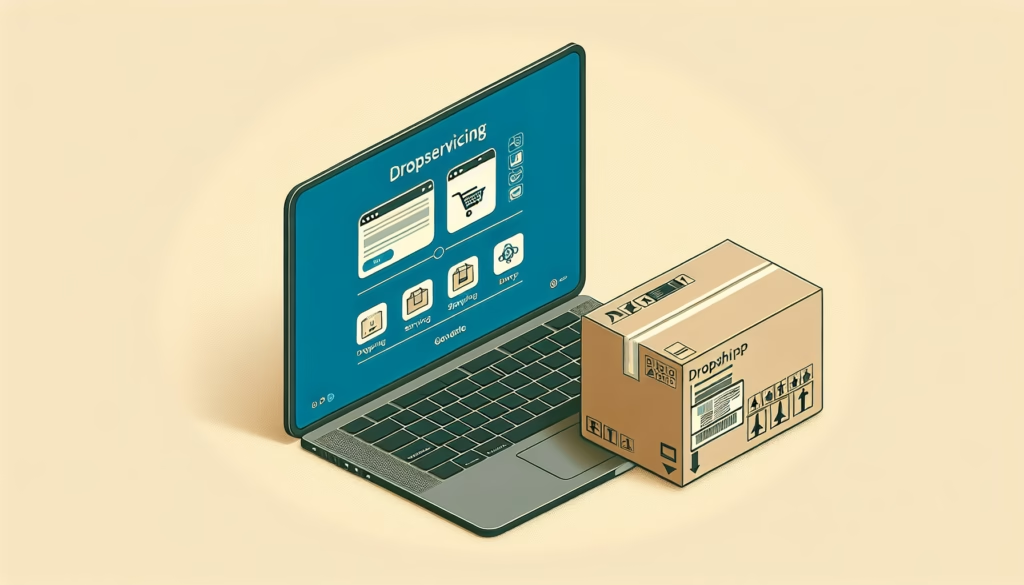
Have you ever wondered about the differences between dropservicing and dropshipping? Understanding these two business models can help you decide which one might be the right fit for you. Both can be lucrative, but they operate in distinct ways. Let’s break them down so you can make an informed decision!

Table of Contents
What is Dropshipping?
Dropshipping is a retail fulfillment method where you, as a business owner, do not keep the products you sell in stock. Instead, when you sell a product, you purchase the item from a third party—typically a wholesaler or manufacturer—who then ships it directly to your customer. This model is quite popular among e-commerce entrepreneurs because it requires minimal upfront investment.
How Dropshipping Works
In dropshipping, the process unfolds like this:
-
Select a Niche: You begin by choosing a specific niche or market segment to target. It’s essential to pick a product that you’re passionate about or that has a proven demand.
-
Find Suppliers: You’ll need to partner with suppliers who are willing to work on a dropshipping basis. Sites like AliExpress, SaleHoo, and Oberlo are great places to start.
-
Set Up Your Store: You can create an online store using platforms like Shopify or WooCommerce. Your store will showcase the products you are offering.
-
Market Your Products: Once your store is up and running, it’s time to attract customers through online marketing strategies like social media marketing, SEO, and paid ads.
-
Receive Orders: When customers place orders, you forward these to your supplier, who handles the shipping directly to your customers.
This model drastically lowers your risk since you don’t need to invest in inventory; however, you do need reliable suppliers to maintain customer satisfaction.
What is Dropservicing?
Dropservicing is a business model similar in concept to dropshipping, but instead of physical products, you’re selling services. Essentially, you act as a middleman, providing customer services while outsourcing the work to freelancers or other agencies. This could range from graphic design and web development to content writing and SEO services.
How Dropservicing Works
The process of dropservicing can be broken down into a few straightforward steps:
-
Identify Services to Offer: Start by determining which services you want to sell. Evaluate the demand for specific services and consider your own expertise.
-
Source Freelancers: Just like finding suppliers in dropshipping, you need to build relationships with skilled freelancers or agencies who can deliver the services you intend to offer.
-
Create a Service-Based Website: Develop a site that highlights your services, demonstrates your value proposition, and makes it easy for potential clients to understand what you can do for them.
-
Market Your Services: Use various online marketing strategies to promote your services and attract potential customers.
-
Manage Projects and Communication: When clients place orders, you communicate their requirements to your freelancers and ensure timely completion of the projects.
By not having to perform the work yourself, you leverage the skills of others while maintaining the client relationship.
Key Differences Between Dropservicing and Dropshipping
Identifying the key differences between these two models can clarify which one suits your goals.
| Feature | Dropshipping | Dropservicing |
|---|---|---|
| Type of Product | Physical goods | Services |
| Inventory Management | No inventory required | No inventory required |
| Customer Interaction | Limited | Direct interaction and management |
| Margin Potential | Typically lower margins | Higher potential margins |
| Skill Requirements | Basic understanding of e-commerce | Skills in sales and project management |
| Outsourcing | Limited to shipping/fulfilling | Core services outsourced |
| Return Handling | Must manage returns | Rarely a concern |
Understanding these key differences can give you insight into which model aligns with your interests and strengths.
Pros and Cons of Dropshipping
Before you choose dropshipping, it’s essential to weigh the pros and cons.
Advantages of Dropshipping
-
Lower Startup Costs: You don’t need to purchase inventory upfront, making it more accessible to start a business.
-
Wide Range of Products: You can offer a variety of products without being tied to unsold inventory.
-
Location Independence: You can run your dropshipping business from anywhere with an internet connection.
-
Scalable Business Model: Since you don’t handle fulfillment, you can easily scale without a dramatic increase in operational costs.
Disadvantages of Dropshipping
-
Lower Profit Margins: The convenience can often come with reduced profit margins since you’re purchasing products at retail prices from suppliers.
-
Reliance on Suppliers: Your business hinges on the reliability of your suppliers; any delays can lead to customer dissatisfaction.
-
Limited Control Over Products: You have little to no control over product quality, packaging, or shipping times.
-
High Competition: The low entry barrier means many people might sell the same products, leading to saturated markets.

Pros and Cons of Dropservicing
Just like dropshipping, dropservicing has its advantages and disadvantages.
Advantages of Dropservicing
-
Higher Profit Margins: Service-based offerings generally allow for a higher markup compared to physical products.
-
No Inventory Management: There’s no need for complex inventory management, as you outsource all services.
-
Potential for Strong Client Relationships: You can build long-term relationships with clients, leading to repeat business.
-
Diverse Service Offerings: There are numerous services you can provide, giving you flexibility in managing your niche.
Disadvantages of Dropservicing
-
Quality Control Issues: You rely on freelancers or agencies to deliver quality work, which can be a challenge.
-
Project Management Needs: You need robust project management skills to handle multiple projects simultaneously.
-
Customer Expectation Management: If a freelancer fails to deliver on time, it can reflect poorly on your business and affect customer trust.
-
More Direct Client Interaction: This could be viewed as a disadvantage if you prefer to avoid direct contact with clients or if managing client relationships is outside your comfort zone.
Which Business Model Should You Choose?
Now that you’re aware of the differences, advantages, and disadvantages, it’s time to consider which business model might suit you best.
Factors to Consider
-
Interest in Products vs. Services: Are you more passionate about physical products, or do you prefer services?
-
Budget: Consider your financial situation. Dropshipping requires less upfront investment, while dropservicing might need you to establish relationships with freelancers and set up a service-oriented website.
-
Marketing Skills: Do you have a knack for marketing physical goods or for pitching services? Your strength in either area may guide your choice.
-
Client Interaction Comfort: If you prefer working directly with clients and have good communication skills, dropservicing could be a better choice.
-
Long-term Vision: Think about whether you want to build a brand focused on products or services in the long run.
Taking the time to evaluate these factors can lead you to a clearer decision.
Making Your Decision
Ultimately, the best way to make your decision is to assess your unique skills, interests, and market opportunities. Some entrepreneurs even find success in blending both models, creating a unique hybrid business. A thorough market and self-analysis will allow you to choose based on what excites you the most.
Test the Waters
Before committing fully, you could start small. Consider running a dropshipping store while also experimenting with a dropservicing offering. This strategy allows you to get a feel for each model without fully investing.
Continuous Learning
Regardless of what path you choose, the key to success in both dropservicing and dropshipping is continuous learning and adaptation. The digital marketplace changes rapidly, and staying informed can make a huge difference in your business success.
Conclusion
Both dropservicing and dropshipping present unique opportunities and challenges. By understanding how each model works and weighing the pros and cons, you’ll be better positioned to choose the one that aligns with your personal and professional goals. Remember to consider your interests, skills, and market demands as you embark on your business journey. Best of luck as you take the next step towards your entrepreneurial aspirations!







